This winter I escaped chilly New Zealand for a land far away and many degrees warmer - Croatia!
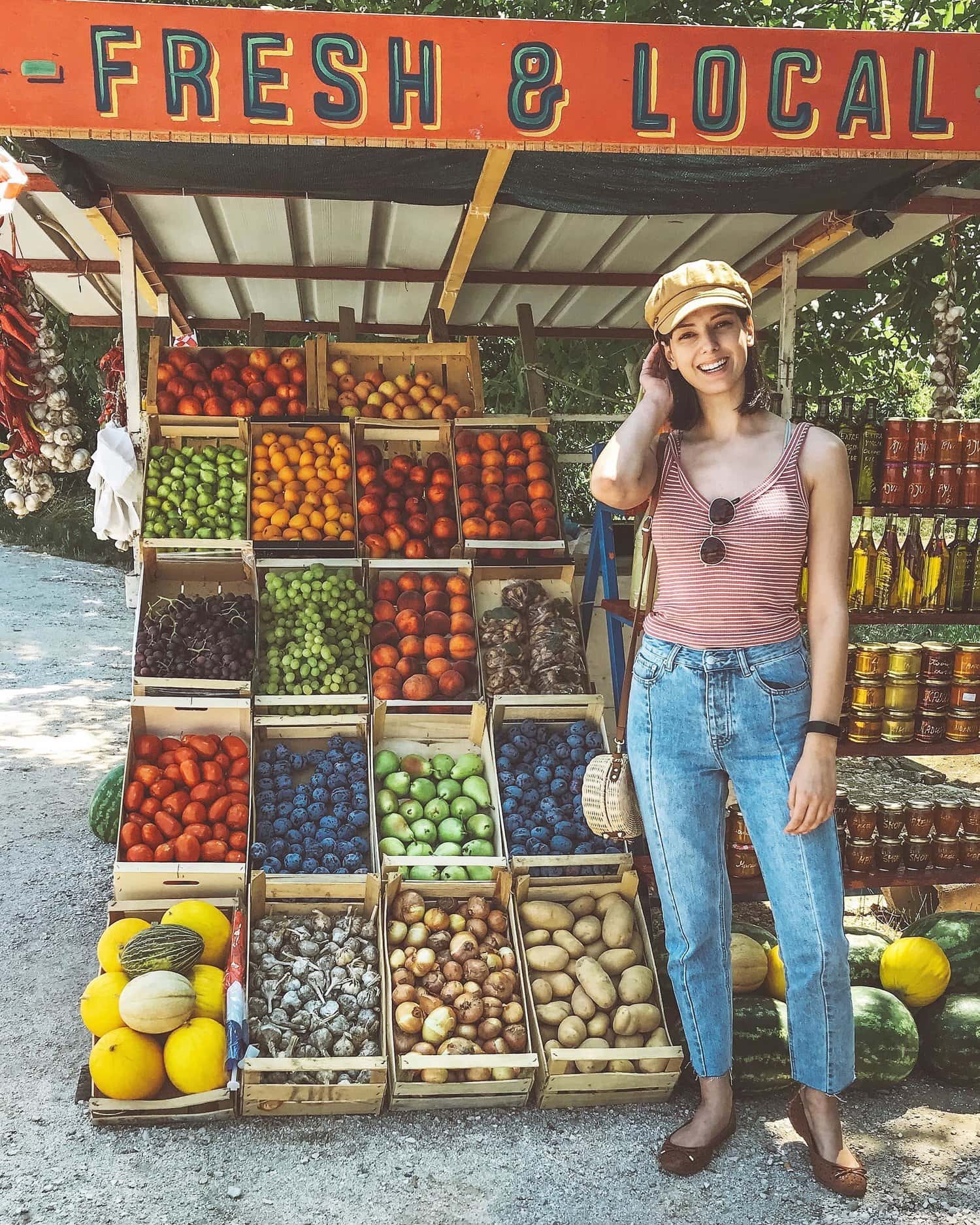
We try venture back every few years, with this trip longer than usual (six weeks) to make the most of the blazing European summer, spend time with the majority of my family tree who reside here, and eat my body weight in fresh figs – all before venturing to culinary school in London at the start of September.
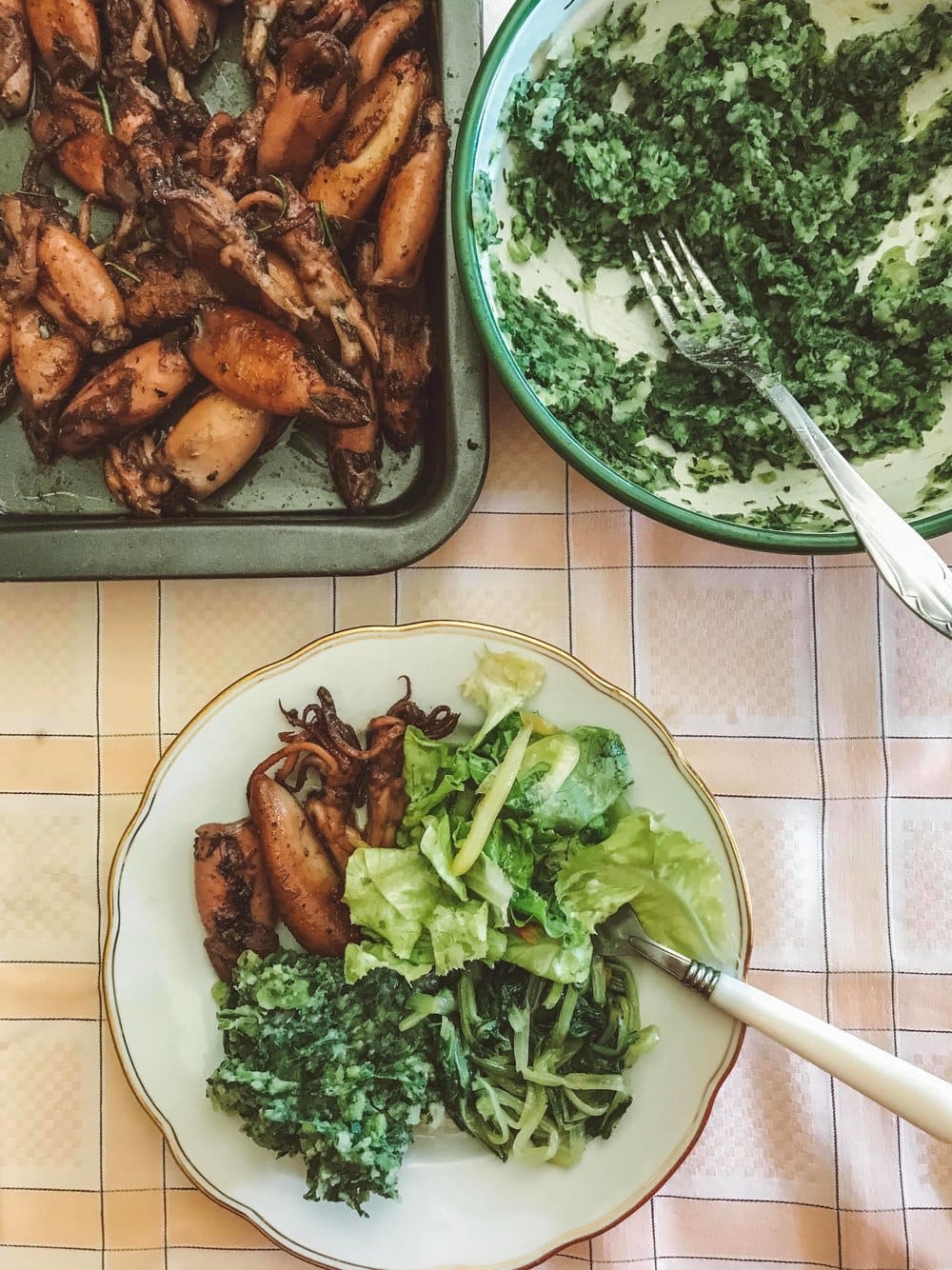
Homestyle feeds – BBQ squid, fresh salad, silverbeet and blitva (mashed potato and chard).
The food or hrana, as always, was incredible – and below is an attempt to summarise favourite foodie moments, famed meals and dishes, traditions and culinary techniques, and what exactly the Croatia cuisine is – which, as I’ve found, is a cuisine that cannot be confined to a single blurb, let alone one identity. Which leads to the perfect entry into the question…
What Defines The Croatian Cuisine?
- In a word: diversity. For a country on the smaller side, the cuisine here is highly varied and regional specific – meaning, depending where you are in Croatia, will influence the dishes you can expect to see, order and enjoy.
- This isn’t all too unexpected though. Culinary methods have been heavily influenced by the various empires and republics, who have had a part in Croatia’s history stemming back thousands of years, and the flavours and traditions of nearby countries, in which there are many.
- While there are, of course, similarities across cooking techniques throughout Croatia, as well as famed foods (ahem, olive oil), there are nine distinct regions within the country which are considered to have their own regional cuisine – that being, Istria, Dalmatia, Dubrovnik, Lil, Gorski Kotar, Zagorje, Međimurje, Podravina and Slavonija.
For The Sake of Simplicity
You’ll find culinary differences most notable between the coast and mainland of Croatia.
- Mainland cuisine favours heartier style dishes, stemming from Slavic palate influences, as well neighbouring/nearby Hungarian, Austrian and Turkish cuisines (e.g meat-based meals, breaded goods, rich stews, sarma or cabbage rolls, plenty of garlic and onion, and spices like black pepper and paprika).
- In contrast, the coastal regions have intertwined strong Mediterranean flavours into food, with Greek and Italian (Roman and Venetian) influences – we’re talking olive oil all-day-every-day (or as I like to call it – ‘liquid gold’), pasta, fresh seafood, and spices, like rosemary and bay leaf, as well as citrus rind.
- So, to sum up that mini essay (phew) – consider the Croatian Cuisine the ‘cuisine of the regions’.
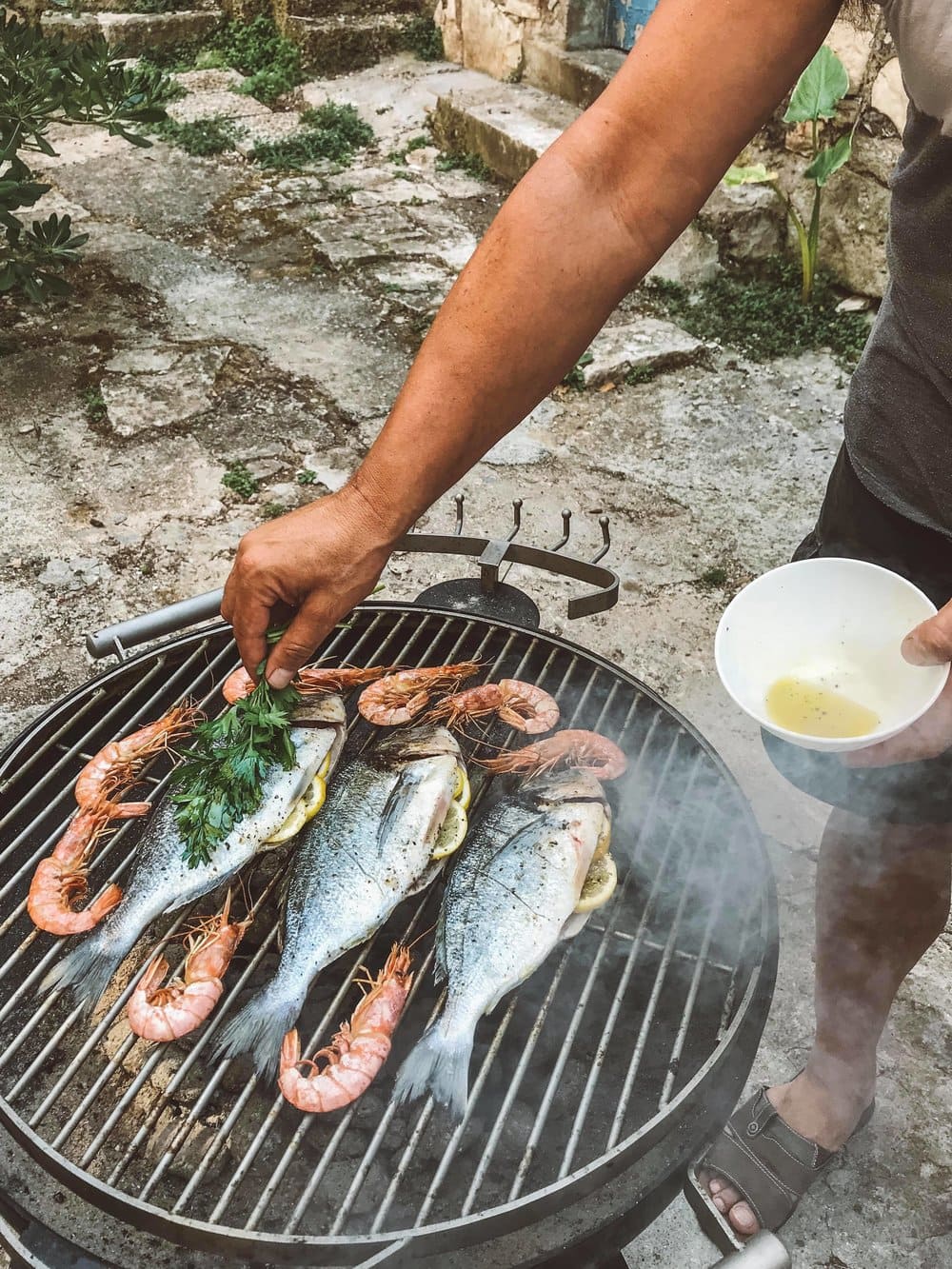
BBQ’d prawns and fish stuffed with lemon slices, parsley and garlic, all drizzled with olive oil – yum.
Coastal Cuisine
My travels to Croatia were situated across the coast and islands, where both my mother and fathers extended family reside. This is the region of cuisine I’m most familiar with – here you’ll encounter fresh natural ingredients combined through simple preparations that really maximise flavour. The food is utterly delicious!
- Being near the ocean, there’s plenty of seafood on the menu – think grilled fillets of whole fish (riba) smothered in garlic, flat-leaf parlsey and olive oil; chopped octopus (hobotnica) tossed with red onion and herbs; grilled squid (lignje na žaru); and tender-cooked scampi (škampi) served in shell – the latter a little messy to eat, but delicious.
- One of the classic dishes of the Dalmatia coastal region is the peka, which is a style of cooking where a selection of veggies and meat (drizzled with herbs and a good glug of oil) are baked to perfection under a bell-like cast iron dome known as an ispod čripnje, in the embers of a fire place. Definitely a must-try!
- Let’s not forget the veggies On the menu you’ll typically find a good selection of vegetables on offer, most commonly green, cabbage or tomato salad (which often come in cute little portions for one or two mouths); grilled courgette and capsicum; or the signature blitva – a simple, but totally moreish dish, containing chard and potatoes. Make sure to load up!
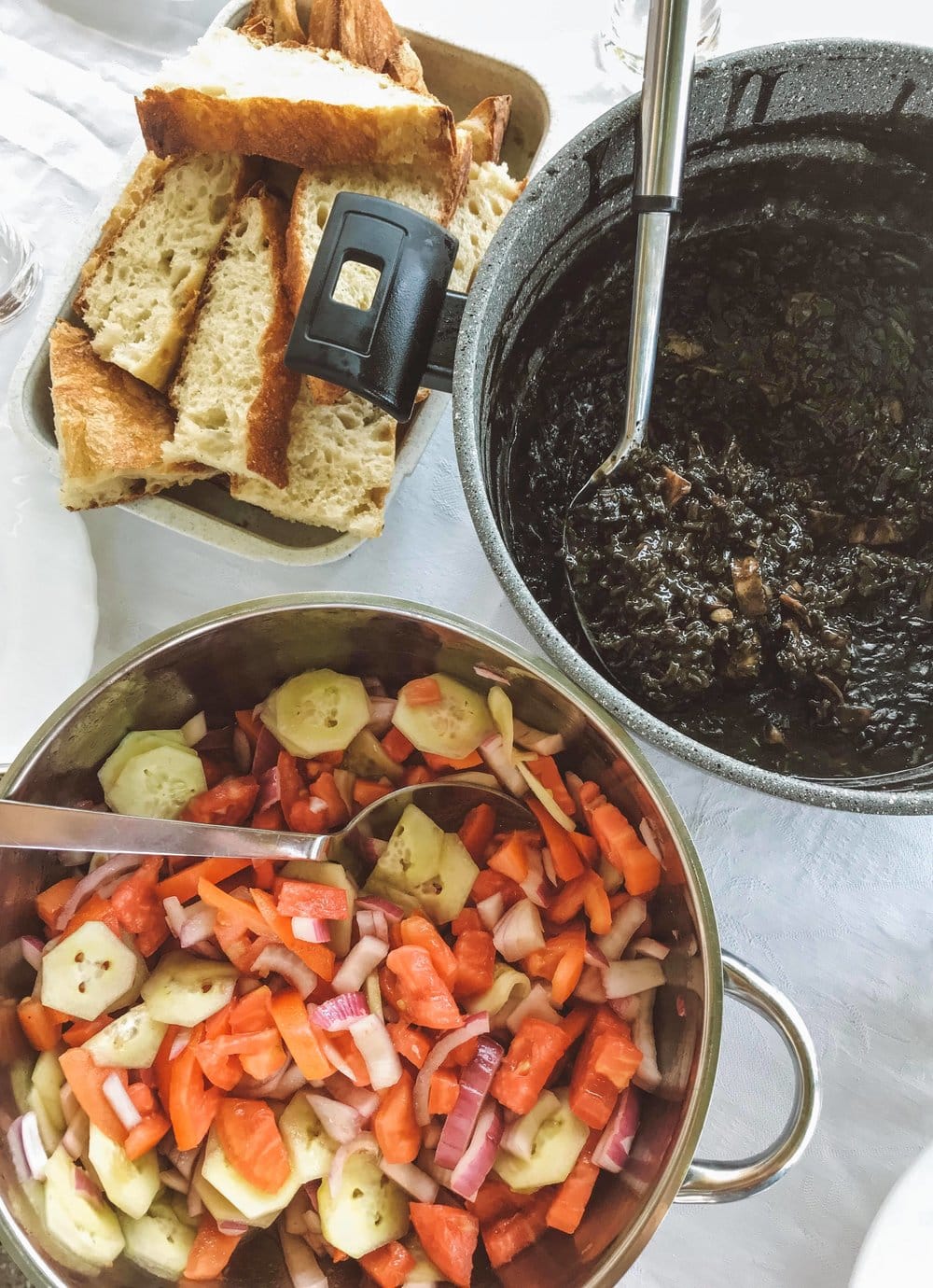
Family cook-ups: crni rižot – black cuttlefish risotto! A popular dish in the Dalmatia region, which gets its trademark black colour from the addition of squid link. Served with a salad, and fresh bread to wipe your plate clean with!

Lunch time platter Croatian styles! Roadside figs and blackberries, green and black olives, pungent cheese, rolled prosciutto, gherkins, fresh veggies, biscotti, nuts and ajvar – a super popular pepper-based condiment here.
The Daily Meal
At home, after work, I’m primed for a bigger dinner. In Croatia, however, the main meal of the day is lunch (in which you can totally see how an afternoon siesta comes to fruition after a three or four course lunch!).
Lunch often begins with a bowl of soup (juha),or prosciutto (pršut) and cheese (sir), followed by a main (typically meat, potato and salad), finishing with dessert, which may be a slice of homemade cake served with black coffee. Dinner is then, naturally, light – you’re not hungry come the end of the day!
Croatian Markets aka Pazar
Markets are a common sight in Croatia – each city has one, or more.
Visiting a pazar is a must for a tourist! It’s a sensory experience, delivering a fabulous bombardment of colour, noise and smell; and a glimpse into typical of day-to-life for locals.
Not only will you find a vast array of fresh fruit and veggies, but local products such as honey, aromatic olive oil, branches of herbs (like bayleaf and rosemary), bagged dried legumes, colourful flower displays, fruit preserves (you must try the fig or smokva jam!), bottled olives, bags of dried fruit and nuts, grappa (a type of alcohol) in all the flavours of the rainbow, pungent cheeses, meats and fish, and home goods, like dainty bags dried lavender, woven baskets, and tablecloths.
My market-dwelling tips: don’t be afraid to barter, and go early to beat the heat and view the stalls in all their glory.
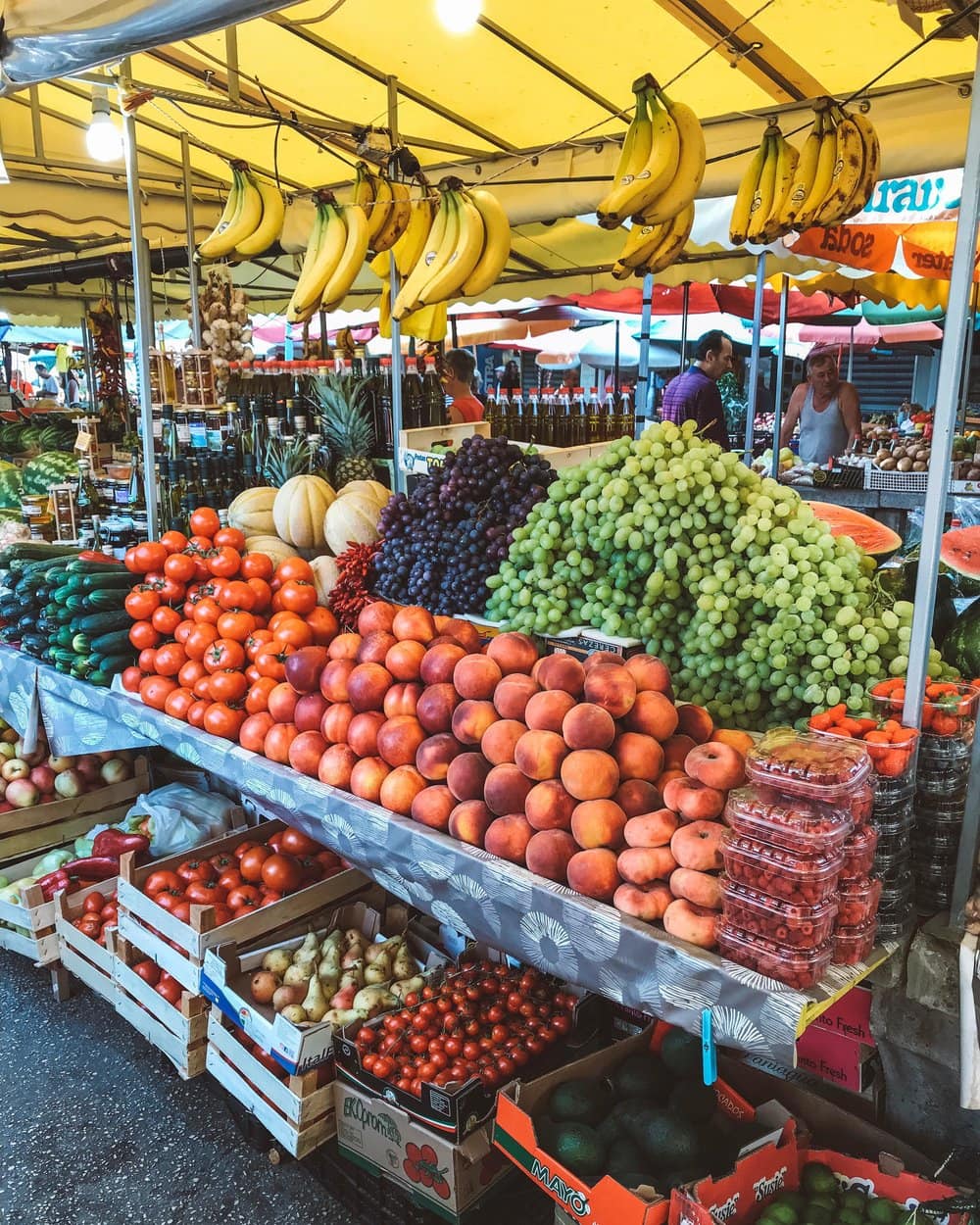
Colourful fruit and veggie stalls in Trogir, located near big city Split
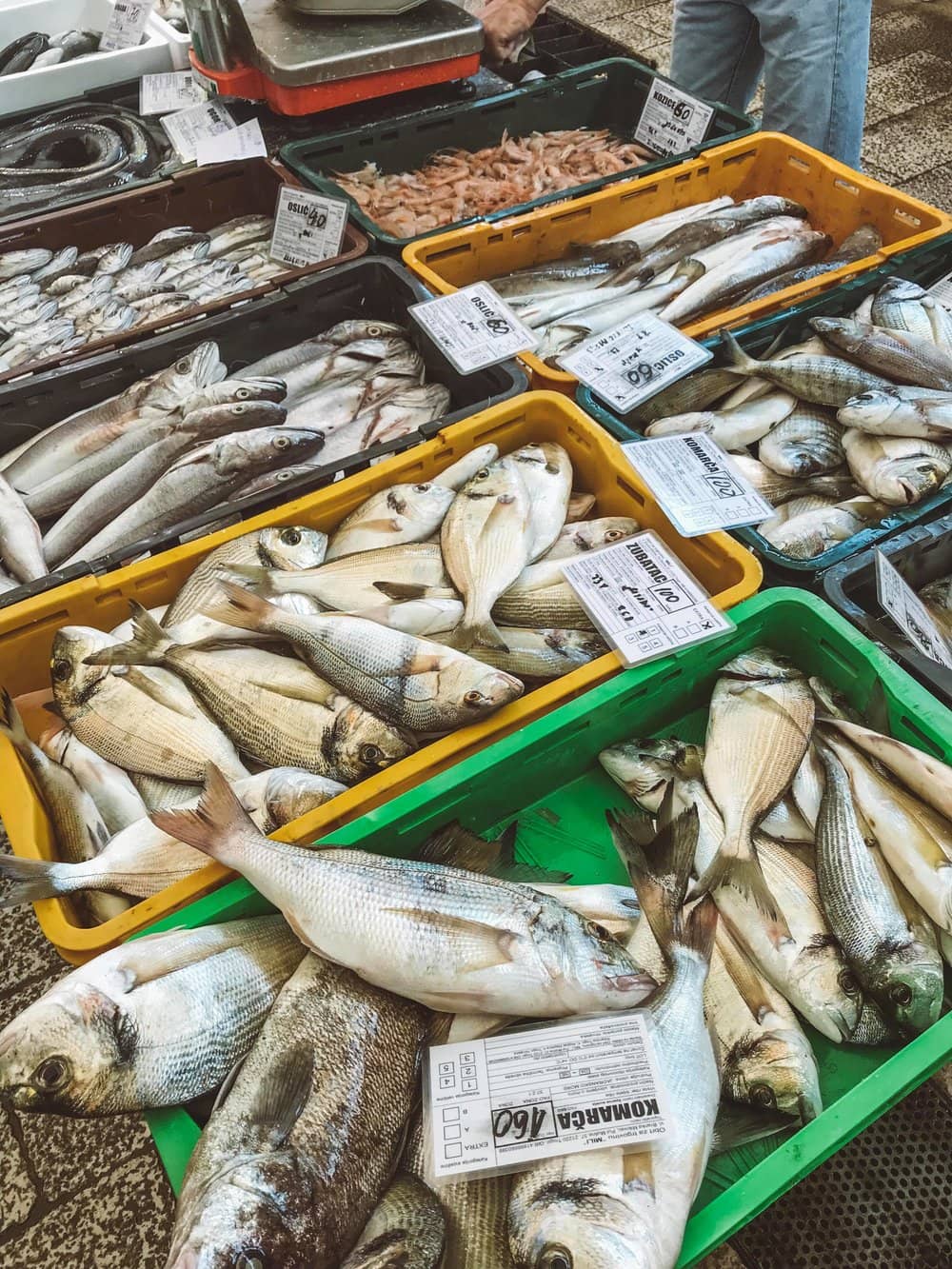
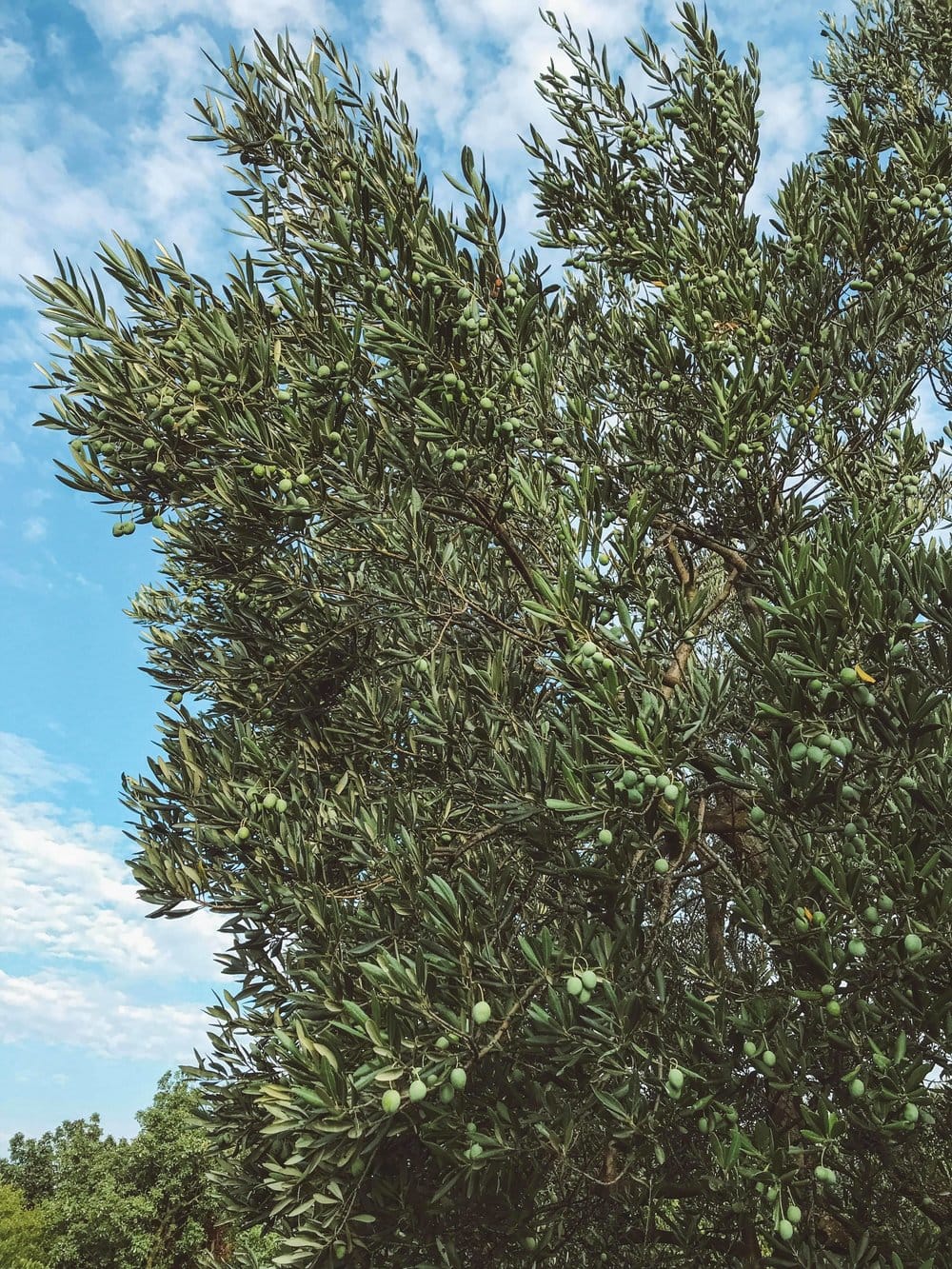
Olives trees are prolific in Croatia. There are ideal growing conditions for cultivating olives thanks to Croatia’s geographical position, soil composition and microclimate. Many locals will press their own oil to sell at the markets.
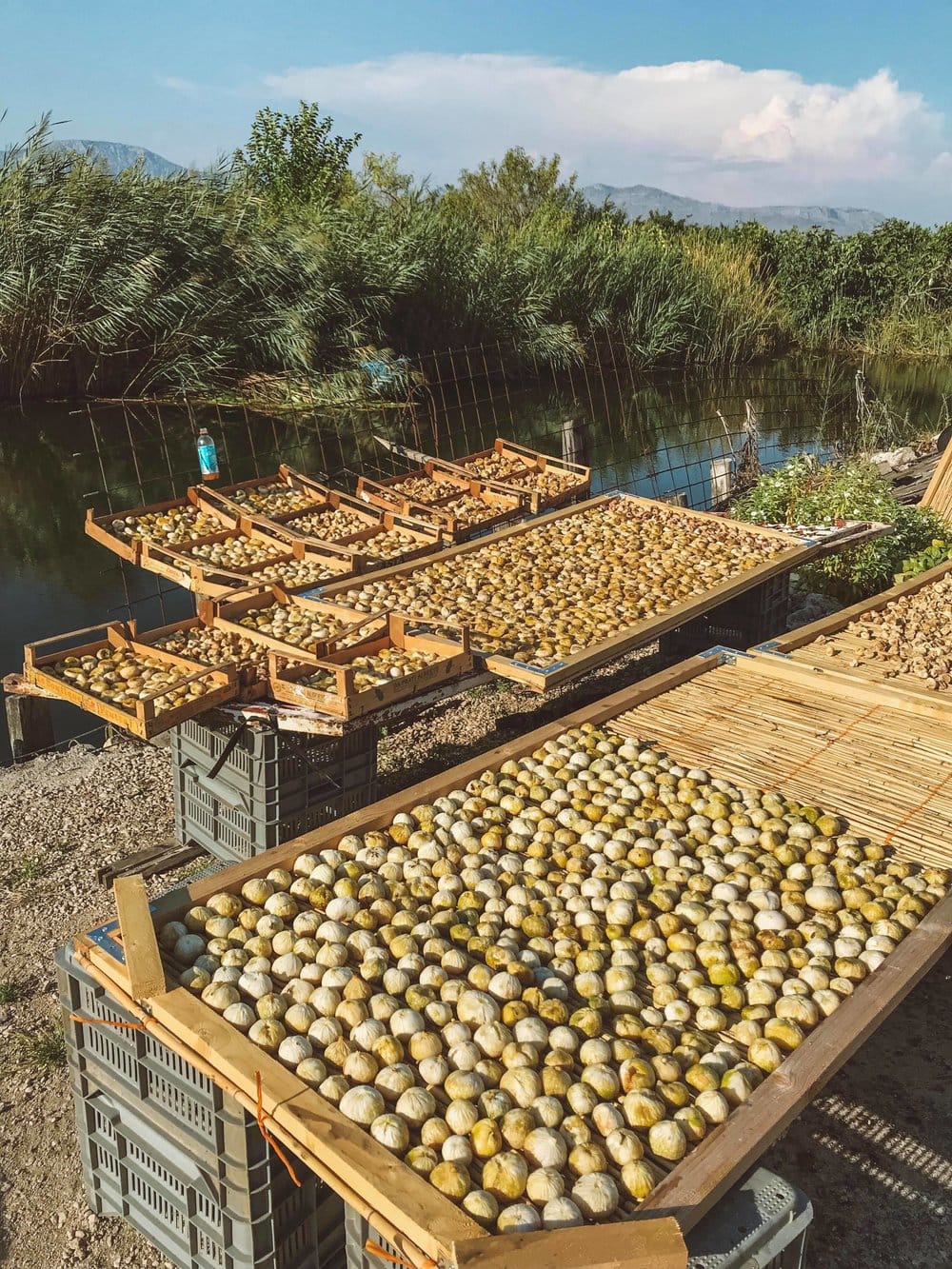
Dried figs in the making, taken at a local village.
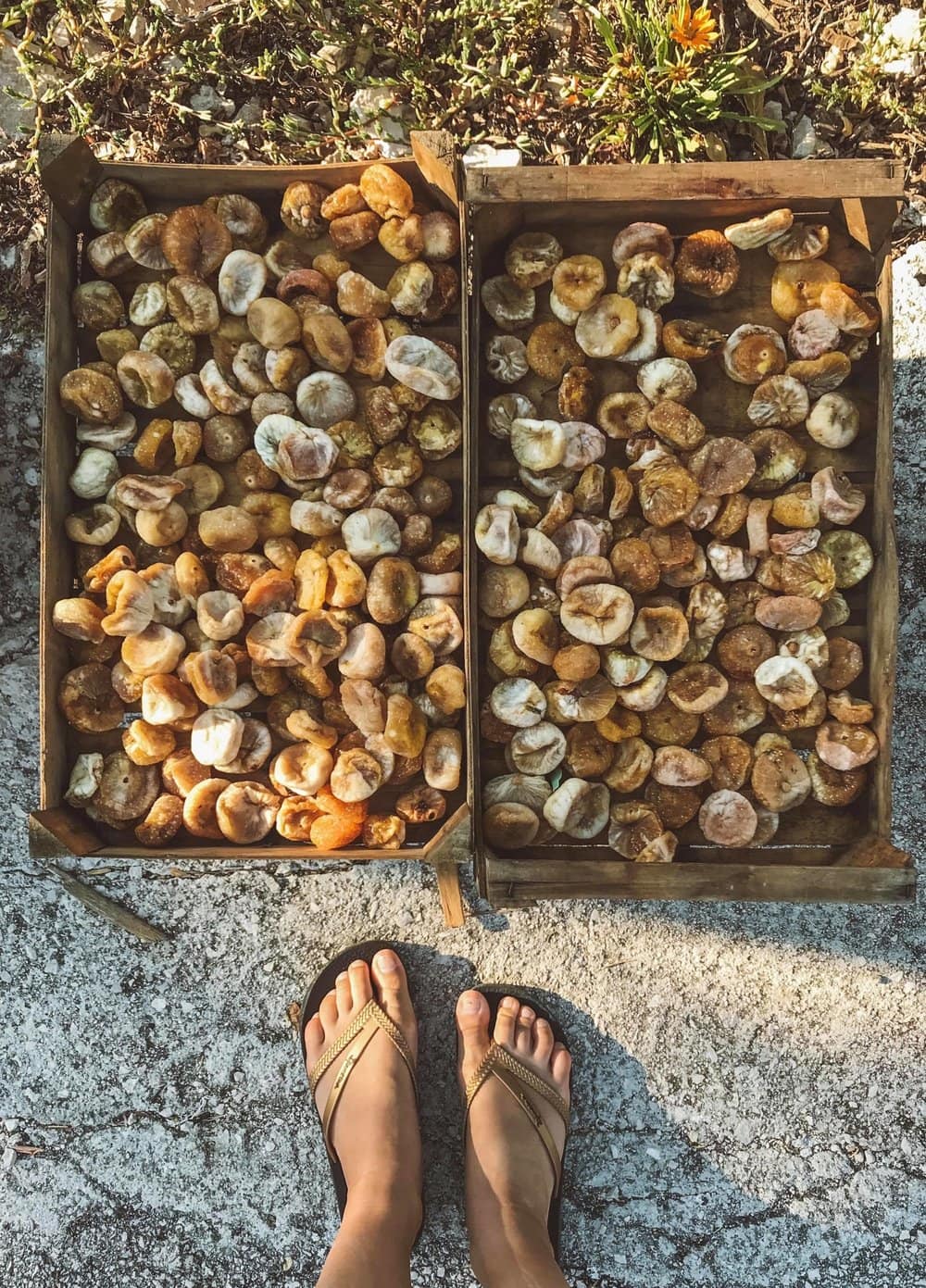
After the figs have been dried and appropriately preserved, they’ll be bagged to sell at the markets.
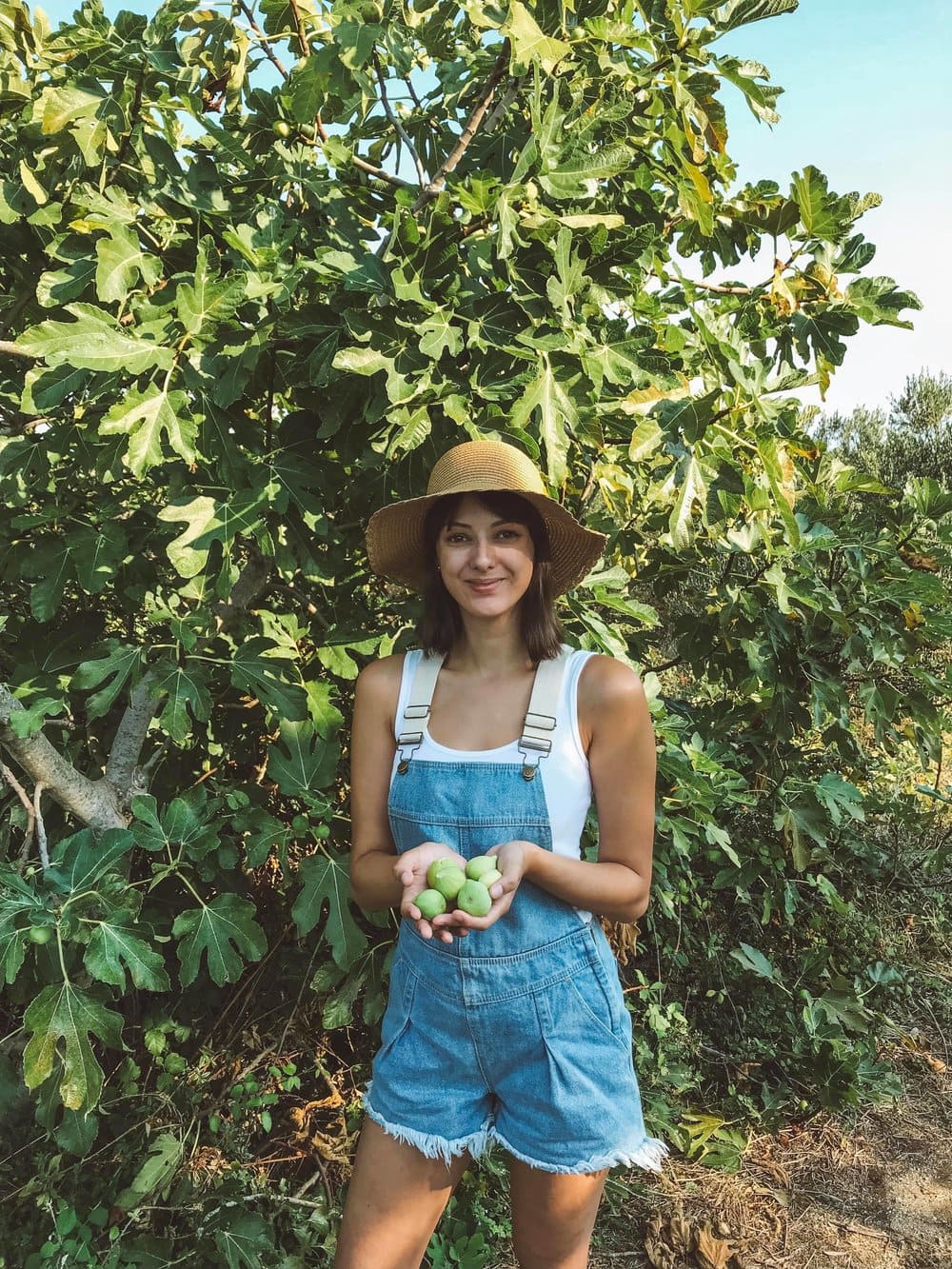
Fresh fig trees errrrrrr where
Dining Out
Tourism dominates the service sector of Croatia (accounting for up to 20% of the countries GDP), with bulk of tourism situated across the Adriatic coast. As a reflection, the dining-out options are absolutely prolific, especially in touristy hot spots and cities. Look out for signs for a restoran (restaurant) or a konoba (tavern) when hungry – the latter having a little more of a folksy vibe.
I’ve found restaurants typically offer good value for money, with many spots run by locals passionate about good food – this is where you get those seriously delicious mouth-watering meals that offer a really authentic taste experience. True to the countries nickname of ‘the cuisnie of the regions’, many restaurants will specialise in a cuisine distinct to its/a region. Basically, travelling across Croatia promises endless variety for your tastebuds!
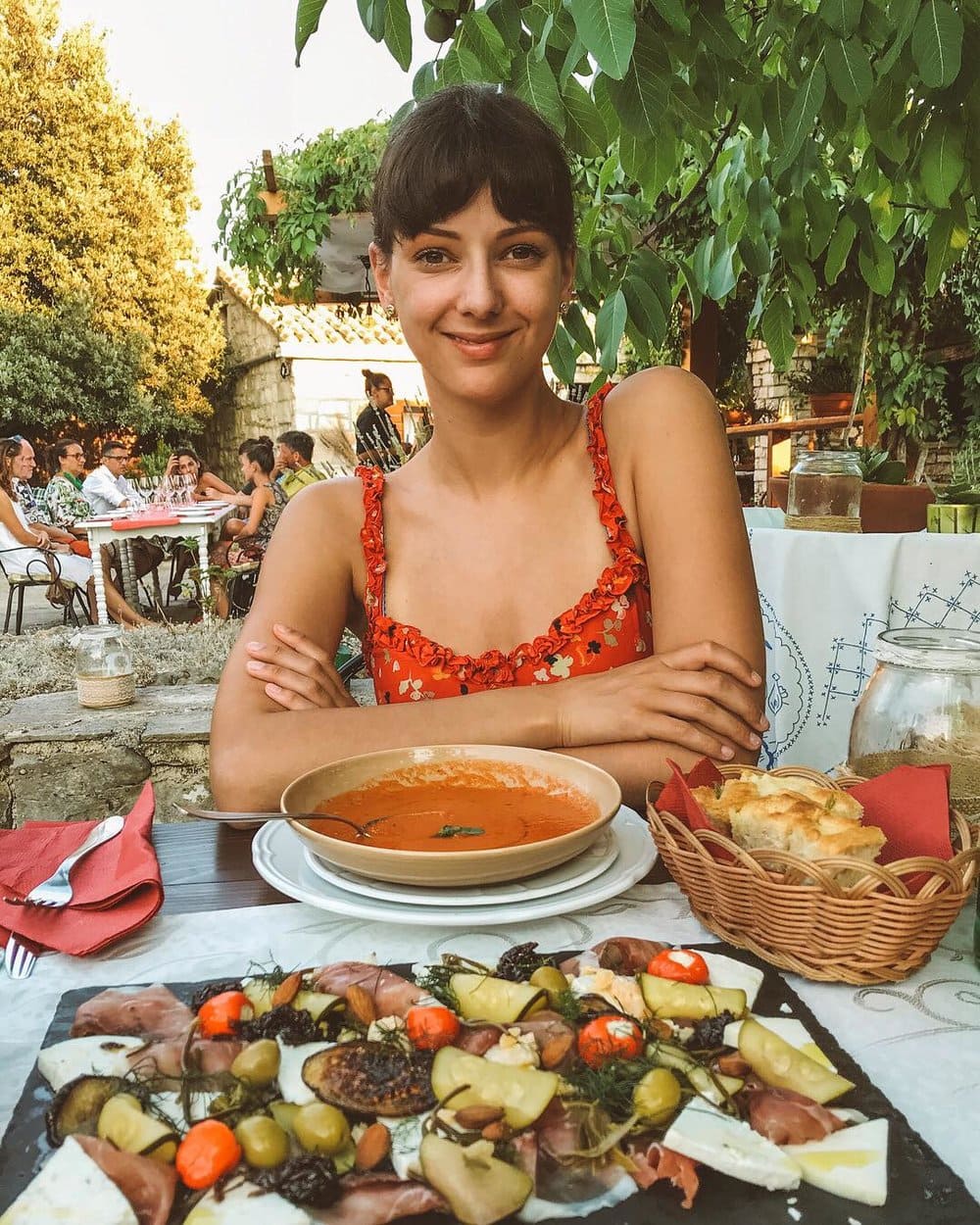

Croatian Cooking Lessons
The last few weeks of my trip I lived in with my beloved 85 year old great aunt (my Dida or grandfather’s sister), a Croatian local who has to be the most active and vivacious 85 year old you’d ever met – she’s fabulous with a capital F. She also happens to be the most incredible home cook!
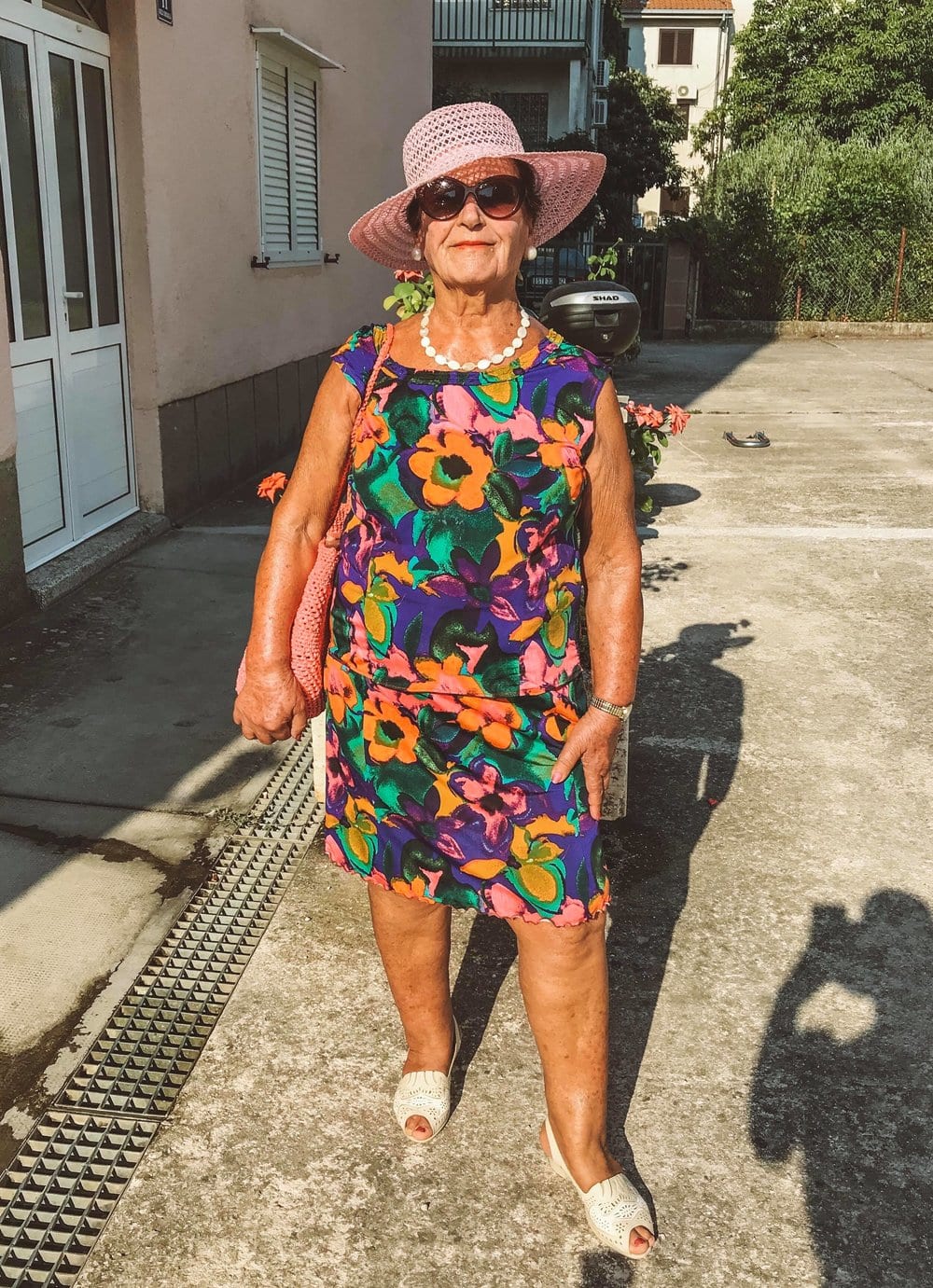
Ready for the morning markets. So sassy!
I asked her to pretty please teach me Croatian cooking and improve my language, in which she totally delivered (equally the best and most challenging way to brush up on language = a complete immersion environment. Get ready to sink or swim).
Most days we’d venture down to the local markets to select fresh produce, meats and pantry items for the day’s fare, before heading home to spend a few hours cooking up a feast.
She taught me everything from traditional fish and meat soups; three types of gnocci (potato, wheat and semolina); šalša od pomidora (tomato salsa); blitva s krumpirom (chard and potato mash); šporki makaruli (a traditional pasta with a cinnamon-meat based sauce); and traditional Croatian desserts like Kroštule and Fritule.
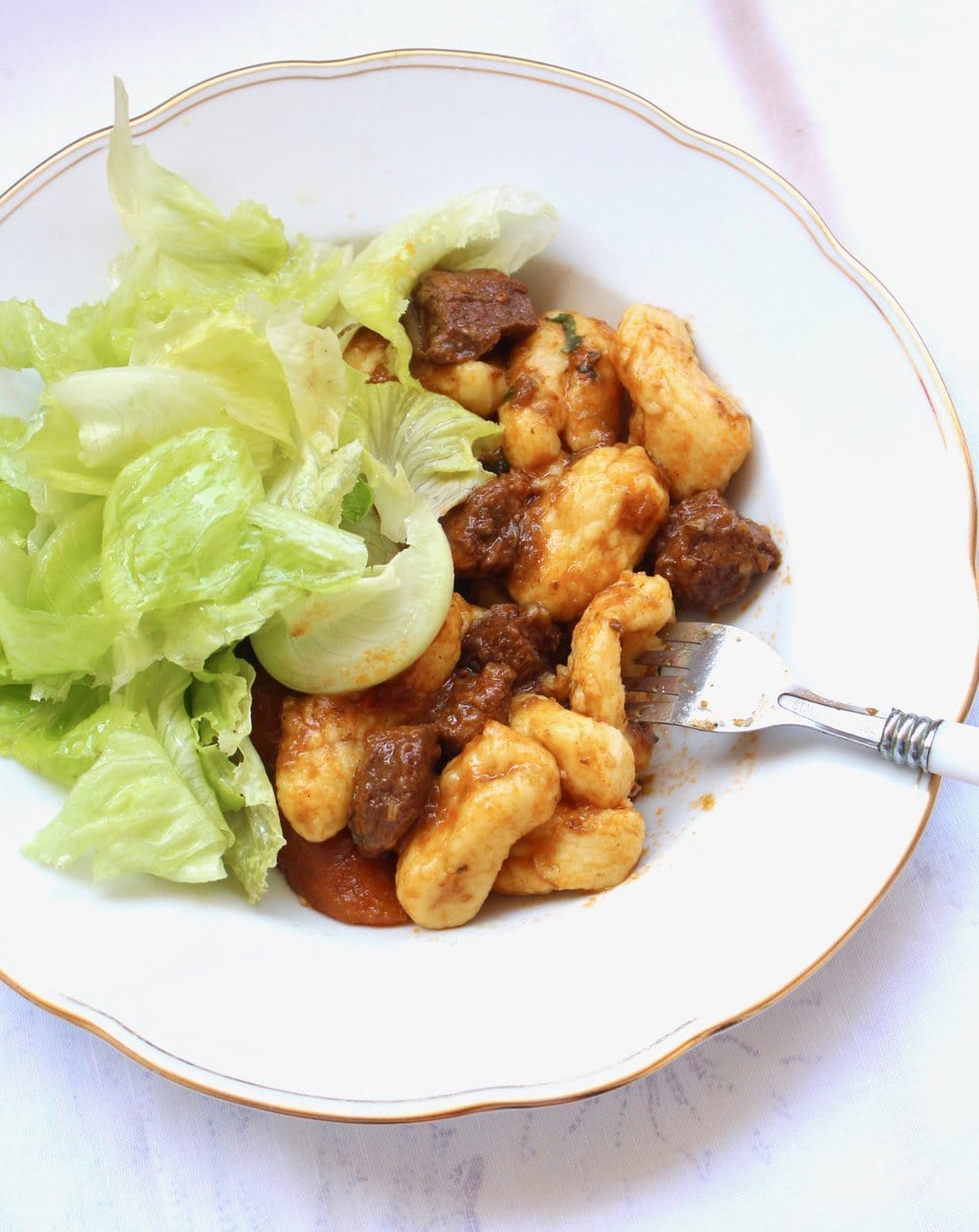

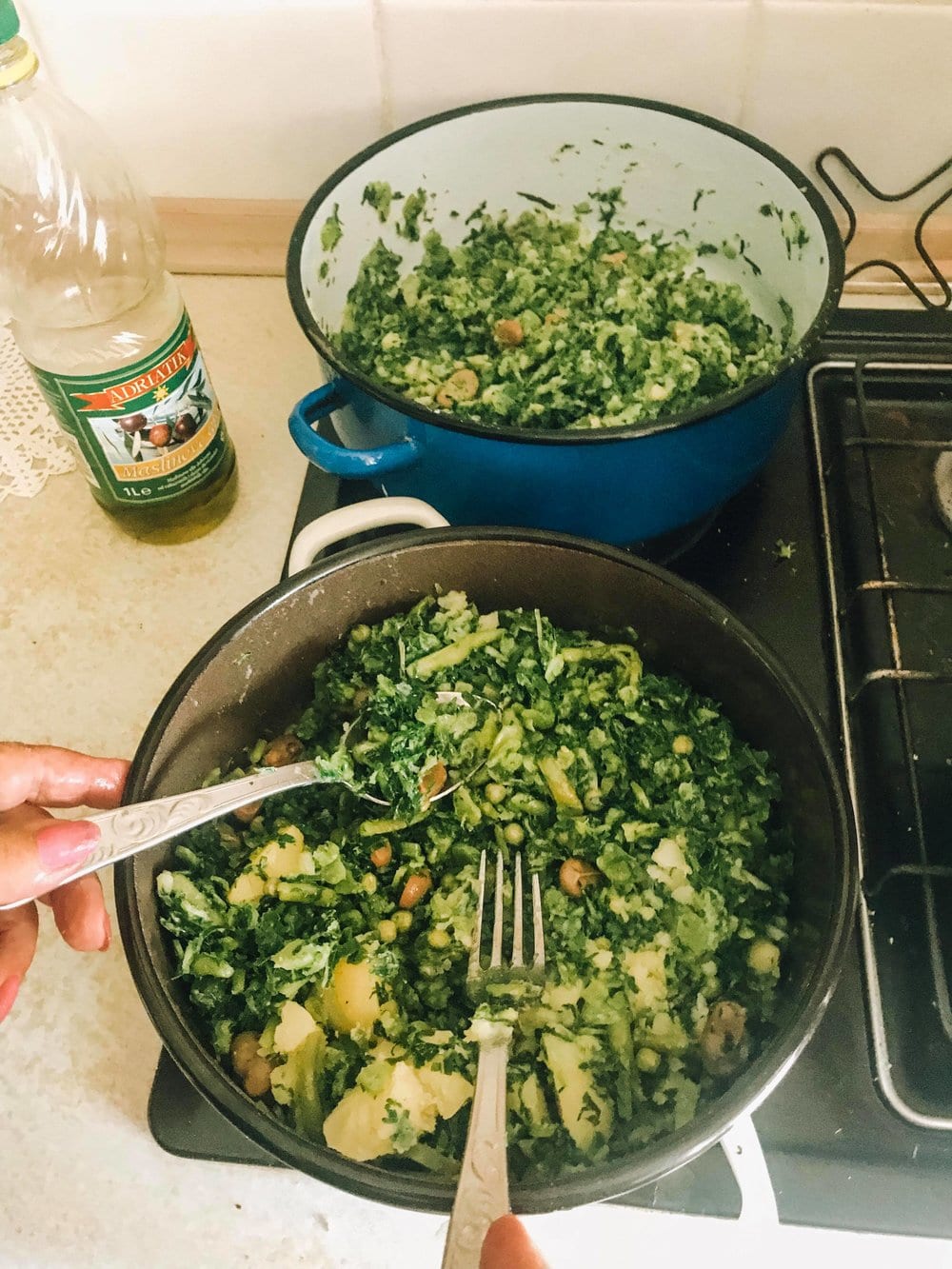
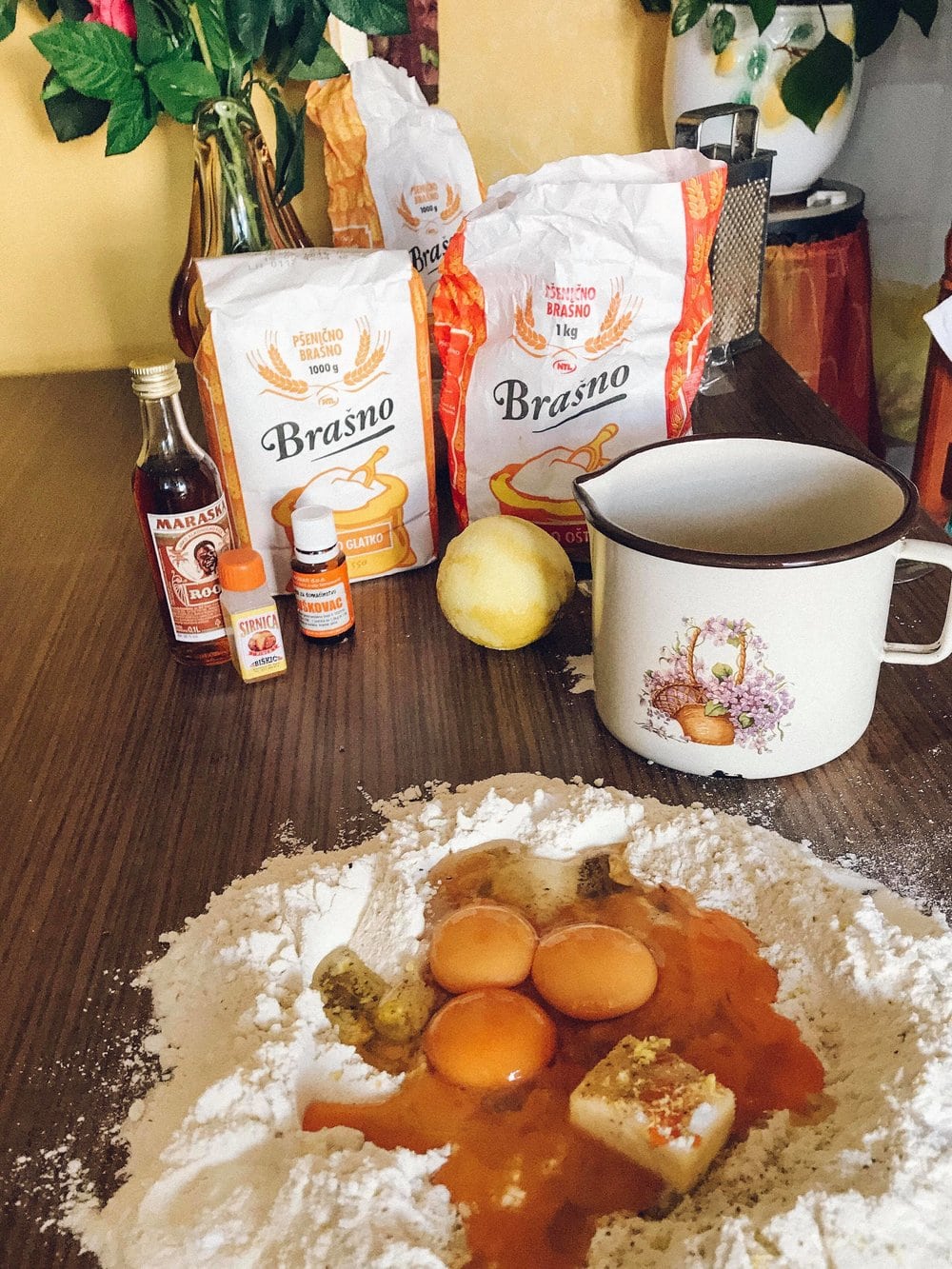
Potato gnocci with a beef sauce, kroštule in the making, fish soup (juha od riba), and blitva (mashed potato and chard).
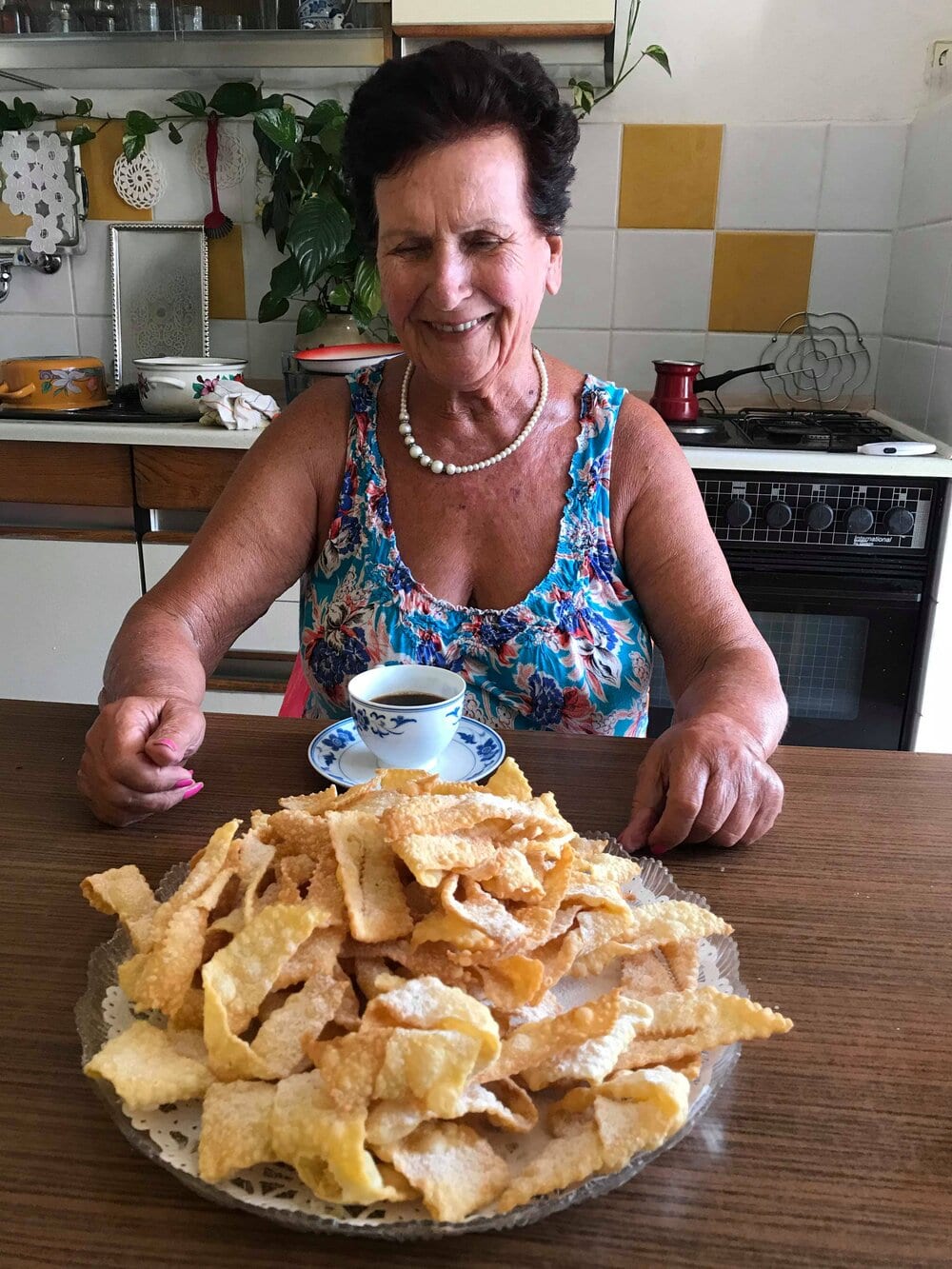
Teta with a plate of her homemade Kroštule!
Croatian Sweet Treats
My favourite part of any menu? The dessert section! Croatia didn’t disappoint. Here are some classics:
- Kroštule a traditional Croatian pastry, consisting of thin ribbons of pastry that are deep-fried and sprinkled with sugar – yes, drool. Kroštule is commonly whipped up during the festive season.
- Strudel a filled pastry made from dough with a tissue-thin like consistency. Try the apple filling (strudel od jakuba) which is often a mix of chopped apples, juicy sultana, chopped nuts and lemon zest. 10/10 good.
- Palačinke pronounced pa-la-cheen-ka, these are essentially thin pancakes, and are very similar to crepes. They’re are widely available in restaurants, are quick to whip up, and can be served savoury or sweet, with the latter commonly smeared with jam.
- Fritule many cultures have their own equivalent of the fried donuts, with fritule being the Croatian version. Each family seems to have their recipe, with slight variations on ingredients, whether that being the addition of grated apple, yoghurt, lemon rind, a splash of alcohol, or a handful of sultanas. You sometimes see stands selling fritule at food markets, towns or fairs.
- Gelato while an italian dessert, I’ve included gelato as you’ll find a gelato or sladoled (ice cream) store everywhere and anywhere here in Summer! A scoop is the best way to cool down on a hot day.
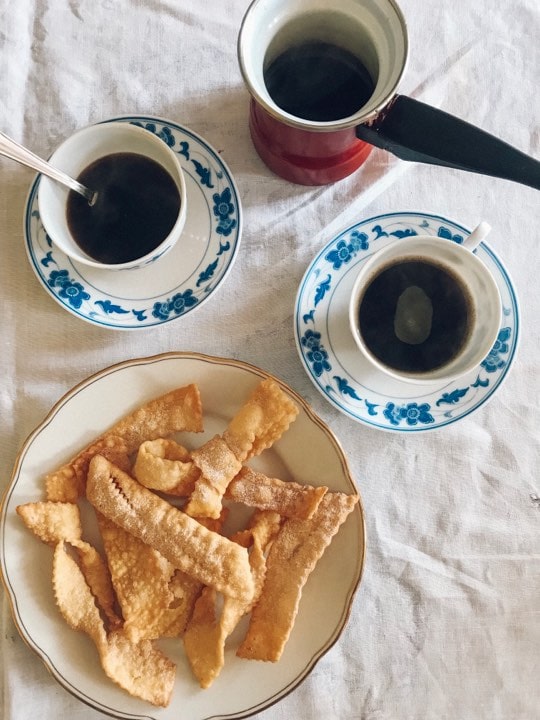
Kroštule
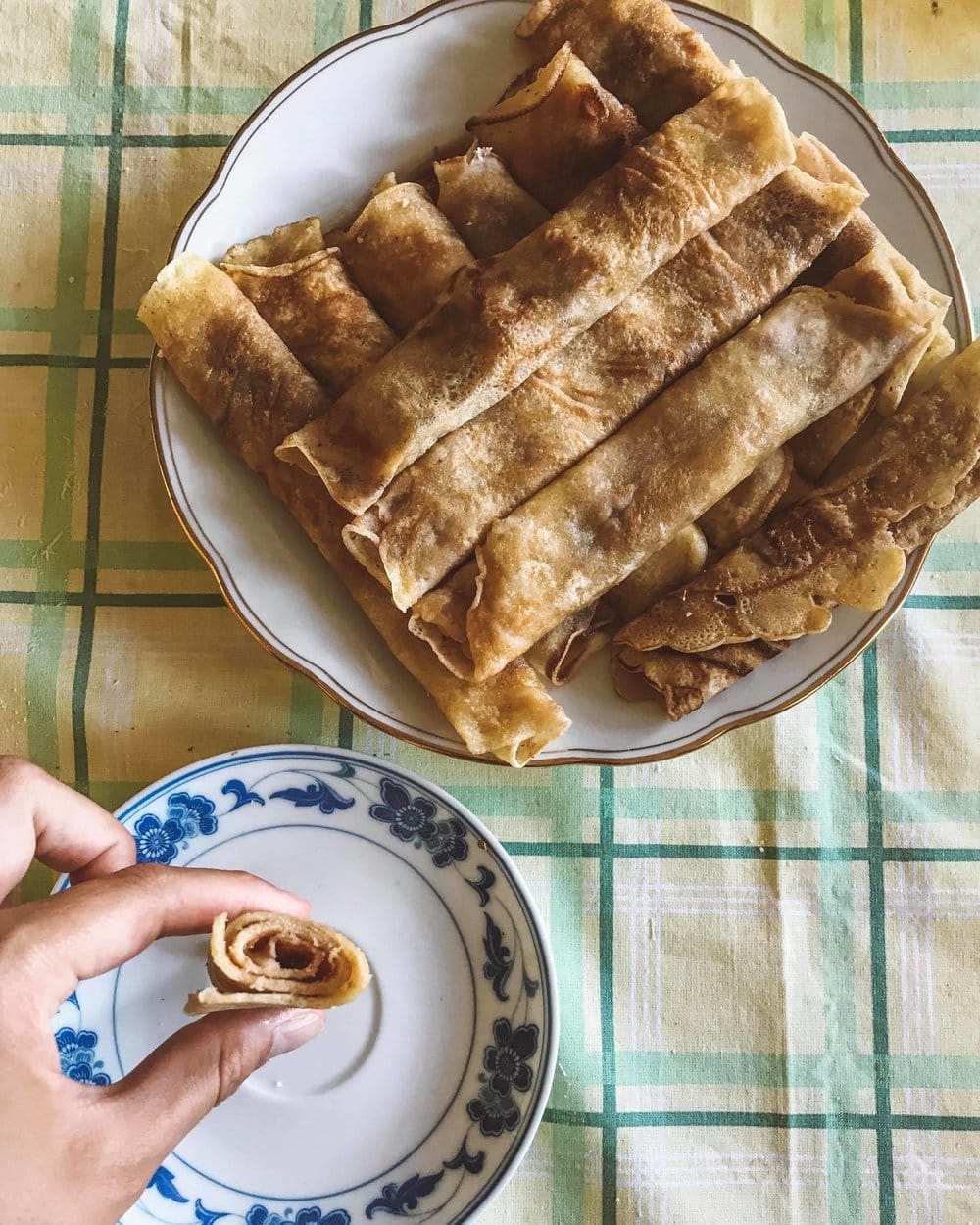
Palačinke
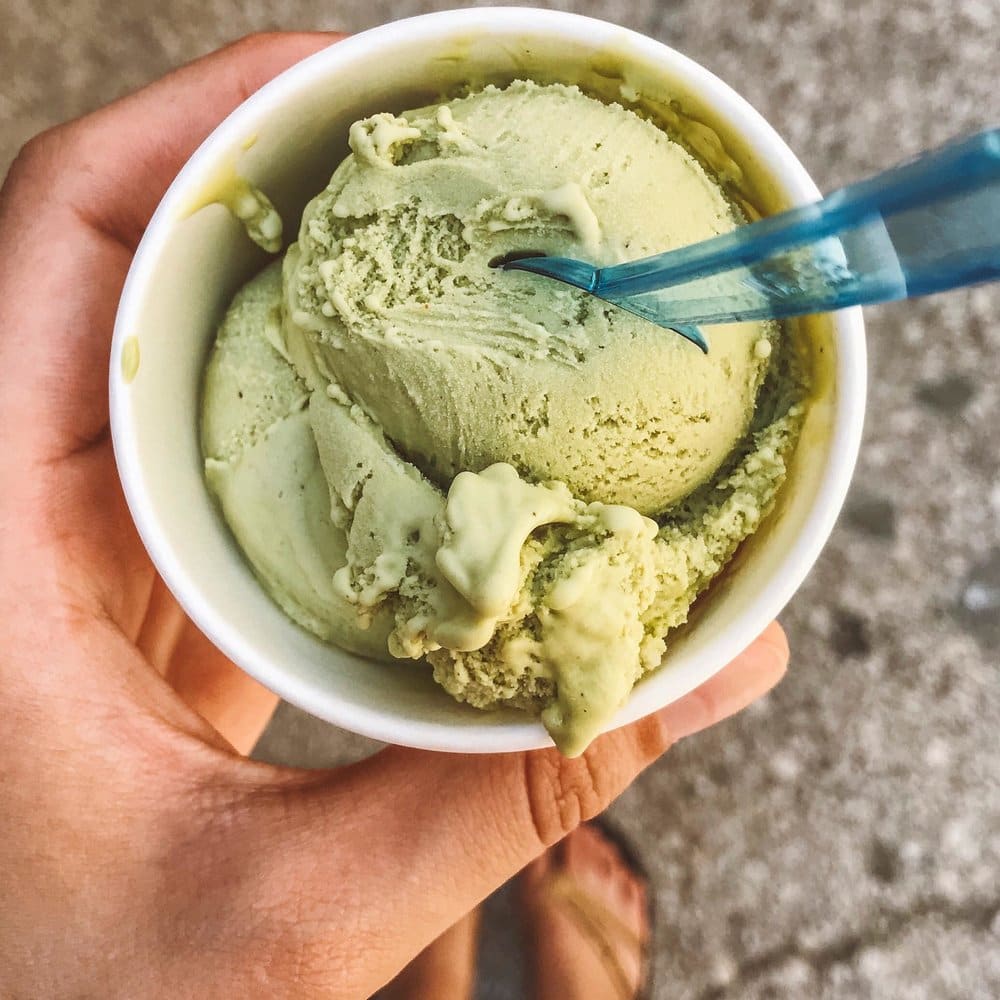
Pistachio gelato
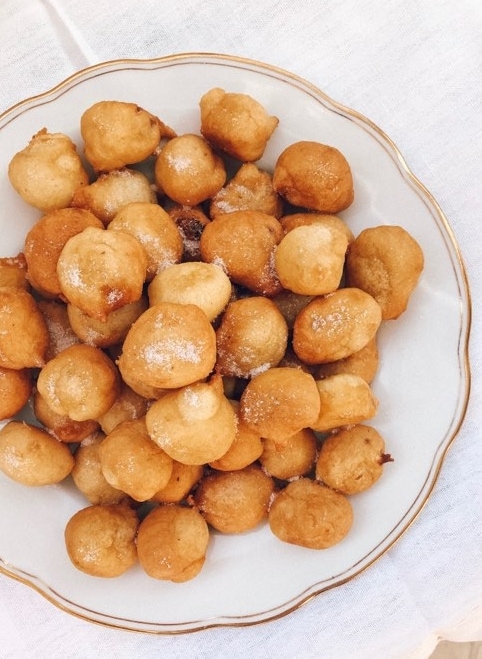
Fritule
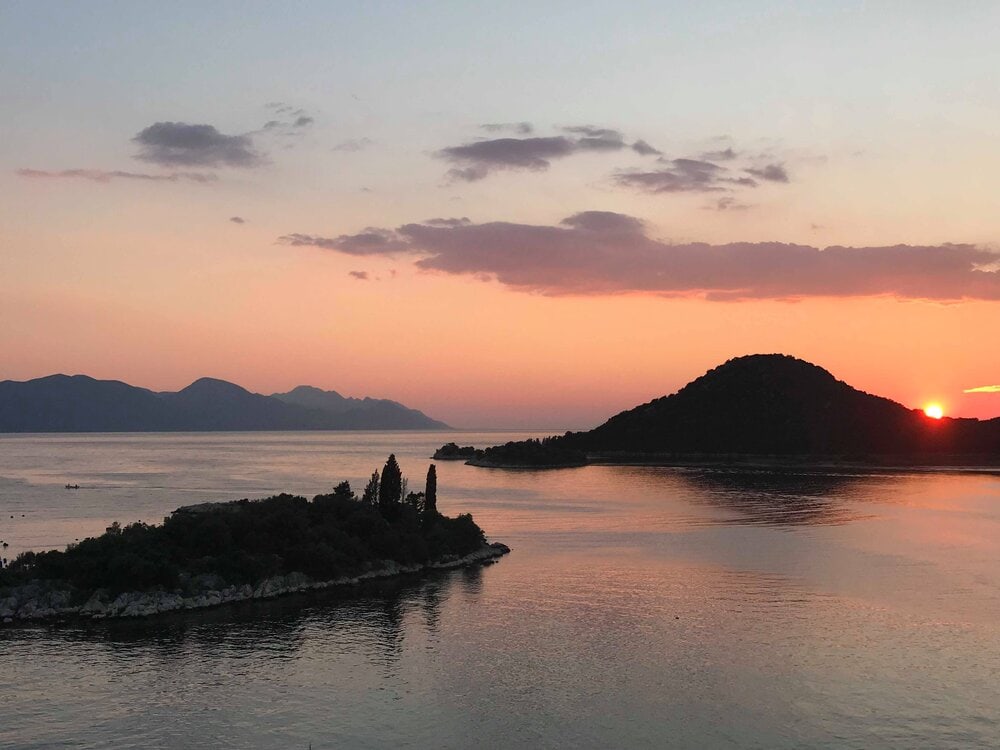
Sunset in the village my grandmother, or baba, was born and raised in
To Wrap Up
That concludes what has turned out to be a very long blog post – but it has been fun to write. Thanks for reading if you’ve got this far!
I highly recommend a trip to Croatia if you haven’t ventured yet, for many reasons outside of the food – the beautiful ocean, endless sunshine, glorious historical architecture and warm, friendly locals. One for the travel bucket list for sure!
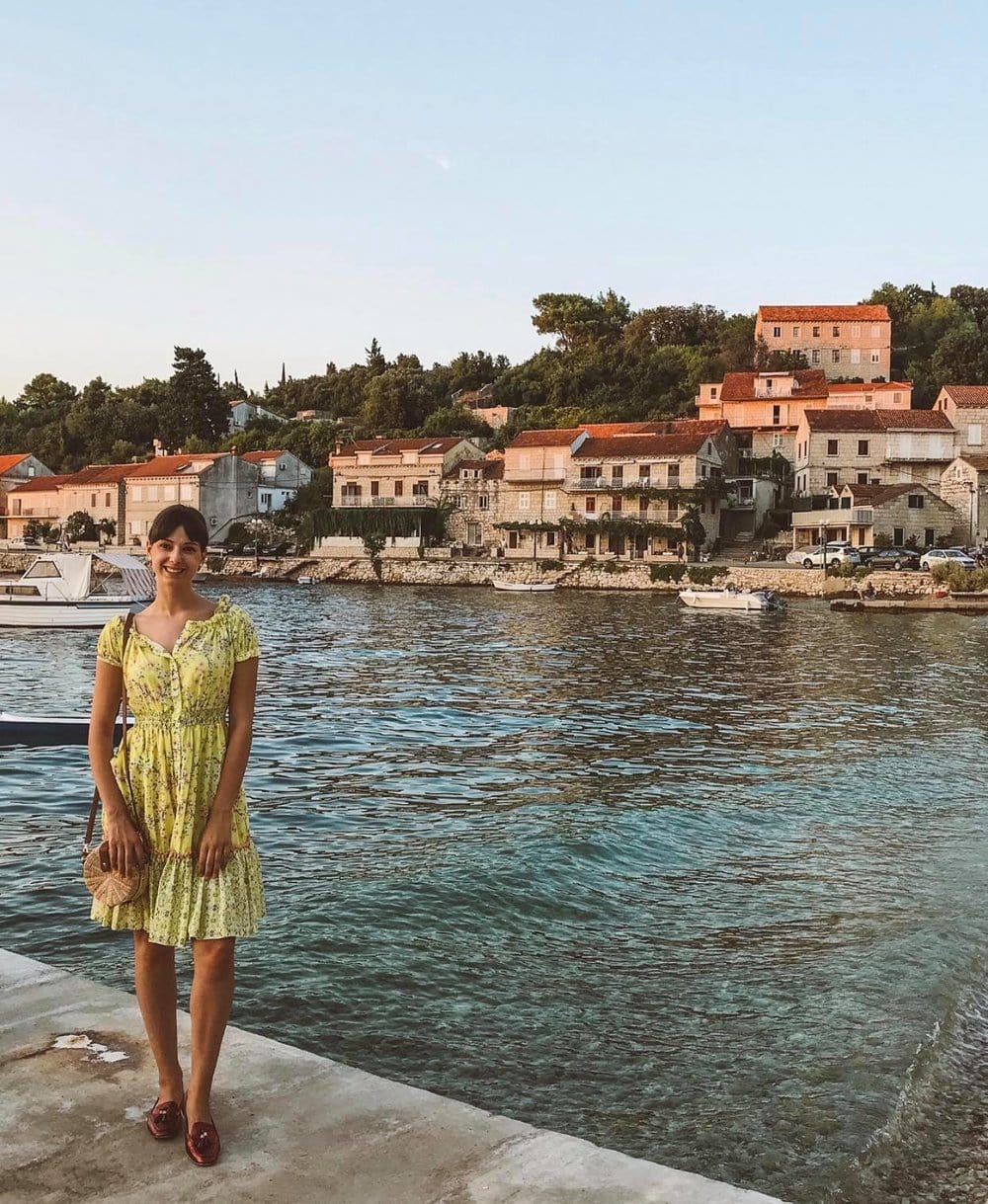
The house at the top right is the house my grandfather (and great grandfather, and great-great grandfather!) grew up in.


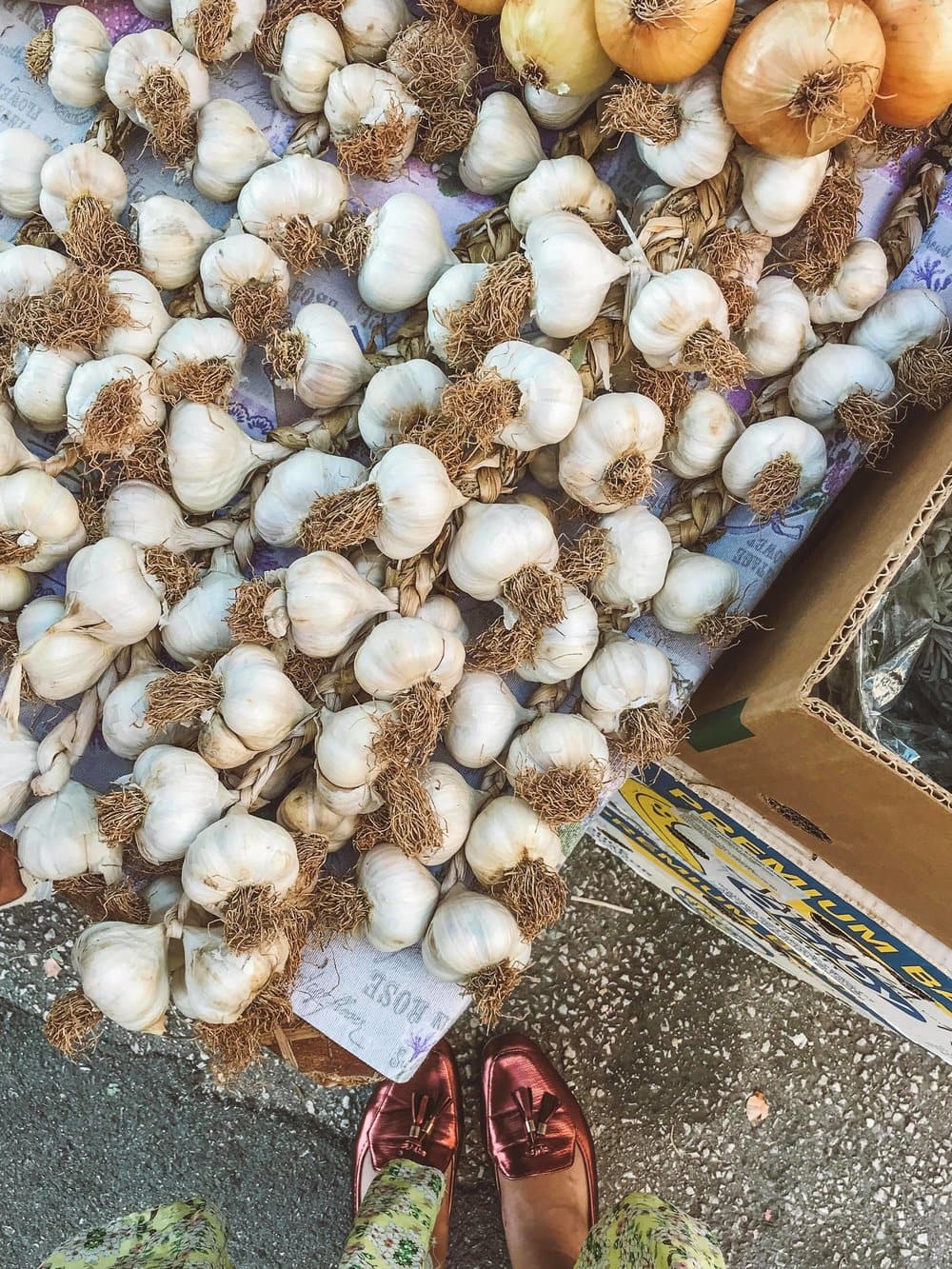
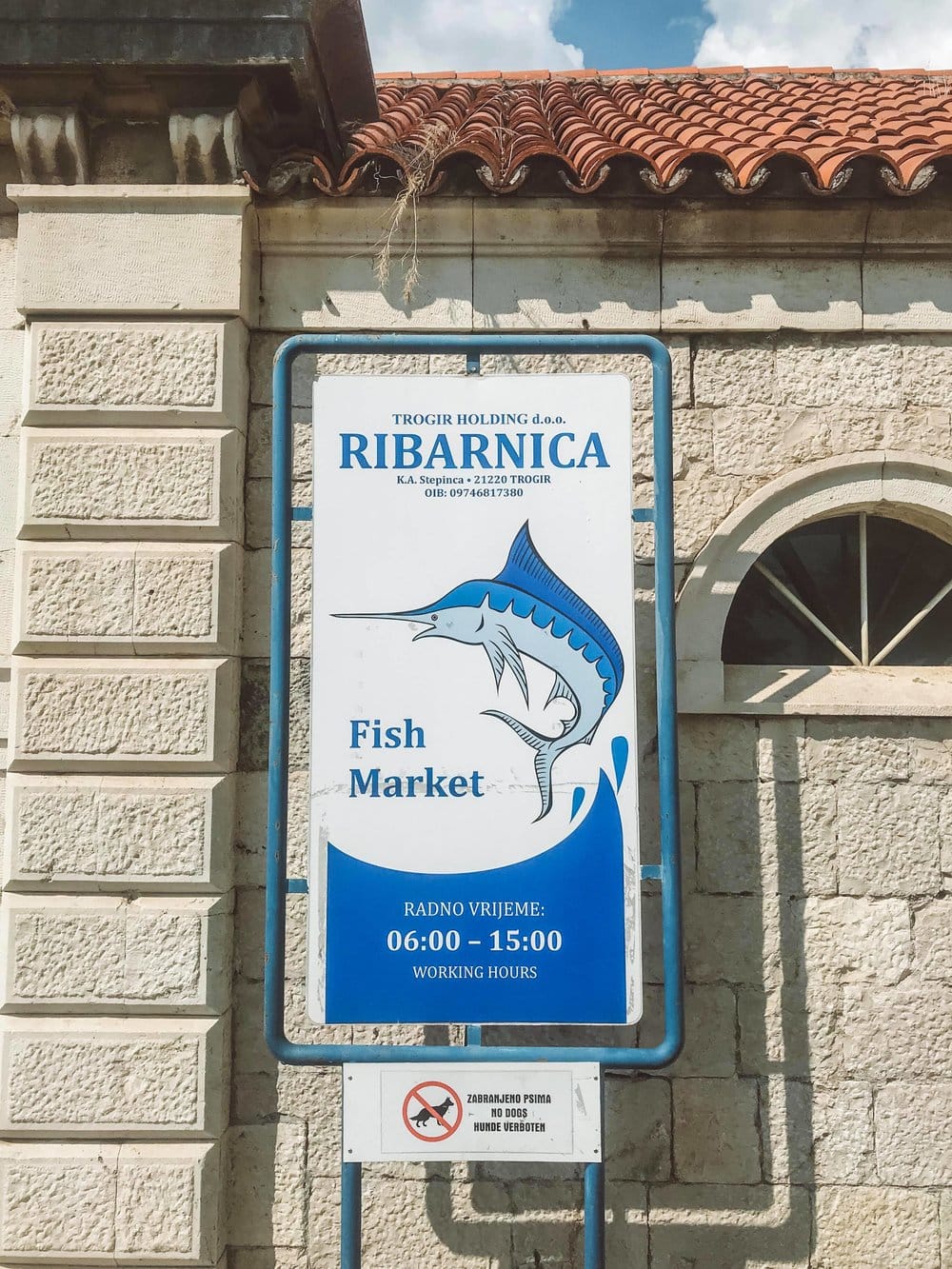
2 Comments
Absolutely loved reading this post! The food sounds incredible & I love how it varies between regions, the colour of the pistachio gelato is gorgeous 😍.
So happy to hear that Emma! 🙂 Yes, so interesting with it’s regional differences – makes traveling across the country fun for the tastebuds for sure! x